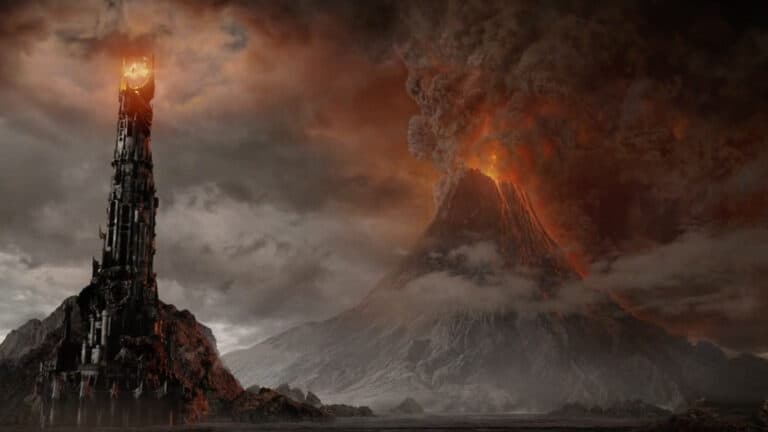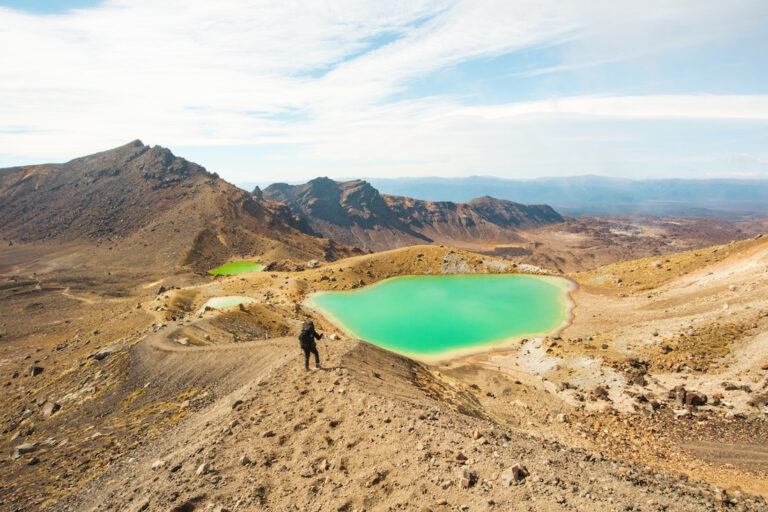Long White Gypsy uses affiliate links and is a member of the Amazon Services LLC Associates Program. If you make a purchase using one of these links, I may receive a small commission at no extra cost to you. See my Privacy Policy for more information.
The Taranaki Falls Walk offers a quintessential and easy experience of the volcanic and geological scenery typical of Tongariro National Park.
This easy 6km / 3.7mi round trip gives hikers a round-trip loop option (via the Upper and Lower Taranaki Falls Loop tracks) or a one-way in and out via either.
If completing the full loop, I recommend you start with the Upper Track, as this affords (in my opinion) the easiest approach to the falls with less overall climbing.
Get all my tips for hiking this easy but spectacular track in this post!
Track Info
Distance: 6 kilometres (loop)
Duration: 2 hours (loop)
Location: Whakapapa Village, Tongariro National Park
Dogs: Not Permitted
Bikes: Not Permitted
prefer to watch?
Watch the full video of this trip.
Things to Know.
Remember, you’re in the Tongariro National Park which is an alpine environment, therefore the weather and conditions can change very quickly. Even in summer, be prepared for any kind of weather (even snow!).
Luckily, the Taranaki Falls Walk is short enough and close enough to nearby Whakapapa Village to make it relatively safe.
The track is also well formed, making it nearly impossible to get lost. Nevertheless, it is exposed in places, and wearing inappropriate clothing could be dangerous.
Following is a list of non-negotiable clothing for hiking in the Tongariro National Park during the Summer/Shoulder seasons:
How to Layer in the Tongariro National Park
Merino Base Layers
Light merinos in summer. Heavier weight merinos in the shoulder & winter seasons. Polypropylene base layers can feel warmer and often dry faster, but don’t always last as long and have a tendency to smell as soon as you do!
Mid Layer
Such as a fleece or mid-weight merino top. This can be short or long sleeved (short is fine in the summer months), but acts as another windbreaking and insulating layer.
Shorts or Pants
This is your individual preference. Personally, I like the versatility of hiking in shorts with merino long johns or leggings underneath. I can remove the leggings if necessary to let the air get to my legs, or layer up for maximum warmth if the weather changes.
Warm / Windbreaking Jacket
Softshell jackets can be a great layering piece when you’re hiking, and many have the added advantage of being water resistant too. However, they can be heavy (especially on long trips) so it’s just as good to layer up a mid-layer fleece or top with a rain jacket for a full warm/windproof system.
Waterproof Layers
Don’t be tempted to save some money and opt for only a water resistant rain jacket. In alpine conditions, the wrong choice of clothing can be the difference between life and death. I have a fully waterproof jacket and pants which I use for hiking in NZ. The investment has been worth it. I can always count on being dry, even in the harshest of conditions.
Comfortable Walking Shoes
On most day hikes in the Tongariro National Park (including the Tongariro Alpine Crossing), a comfortable pair of sneakers will be sufficient.
Often it’s better to hike in a shoe you’ve already worn in, than to buy a new pair of boots. New boots can bring painful blisters.
I recommend boots in the National Park only if either (a) you already own a pair you’re used to hiking in, or (b) you’re venturing out on one of the more advanced tracks or multi-day trips where sturdier footwear is required.
How to Get To the Taranaki Falls Walk.
Use the map above to get directions via your phone’s map app.
The Taranaki Falls Track can be accessed via Whakapapa Village at the top of State Highway 48 in the Tongariro National Park on New Zealand’s North Island.
Turn left onto Ngauruhoe Terrace immediately past the Château and park in the carpark at the end of the road. This is the trailhead for not just the Taranaki Falls track, but also the Tongariro Northern Circuit which is one of New Zealand’s nine Great Walks.
This trailhead will take you straight onto the Upper Loop. If you wish to start on the Lower Loop, turn around and head back down Ngauruhoe Terrace a little way towards the Skotel Alpine Resort. You’ll see another track heading off on the right hand side of the road (as you face down Ngauruhoe Terrace towards the Village).
Taranaki Falls Walk Track Grade & Fitness.
This track is classified as Easy by the Department of Conservation, meaning it is suitable for less experienced walkers and even children. It can be completed in good walking shoes or sneakers.
The track is very well graded, being a nice formed pathway cut into the landscape. The track is dirt or gravel for most of the way (not suitable for pushchairs), with a few short boardwalked sections and a steep staircase joining the Upper and Lower Loop tracks.
The Lower Loop track is the easiest and has the fewest climbs, but there are a couple of staircases to negotiate.
Although it’s nice to complete this track as a loop, if you’re unable to tackle stairs you can go out and return via the Upper Loop Track. This section is slightly hillier than the Lower Loop and more exposed.
Facilities.
All rivers and streams are bridged on making it suitable for walking in all seasons (with the appropriate clothing in the off season).
There is a small seating area at the bottom of the Taranaki Falls with a large octagonal seat, although this fills up quickly during summer.
There are no toilets on this track, so make sure to use the toilet at the Whakapapa Visitor Centre before you go.
Food & Water.
This track will take average walkers around 2 hours to complete, approx. 1 hour in each direction.
Carry enough high-energy snacks to sustain you for relatively easy walking in exposed territory for this amount of time.
If you’re planning on having lunch at the Taranaki Falls viewpoint, obviously you’ll need to pack this with you.
Although the track follows a stream and ends up at the waterfall, it’s inadvisable to drink water collected from this stream unless treated.
Local Māori iwi also consider the water flowing from Mt Ruapehu to be sacred. Therefore, carry all the water you’ll need with you. I recommend 1 to 1.5L of water per person for this track, possibly more if you struggle with the heat.
Seasonal Variations.
The high point of this track is around 1200m / 656ft at the Taranaki Falls Walk upper viewpoint, meaning it’s still a good track to attempt even in the Spring and Autumn ‘off-season’ when the weather is a bit milder.
In summer the Upper Loop is very exposed to the elements, and there’s very little shade along the way. There is no shade at the Taranaki Falls, so make sure you have plenty of water, a good sun hat, long layers and sunscreen to protect from the harsh sun.
In winter, parts of this track may contain snow or ice. Check in with the Whakapapa Visitor Centre before you set out to find out what condition the track is in, whether snow or ice is present or if you may need microspikes for more traction.
More Tracks In This Region
The Route.
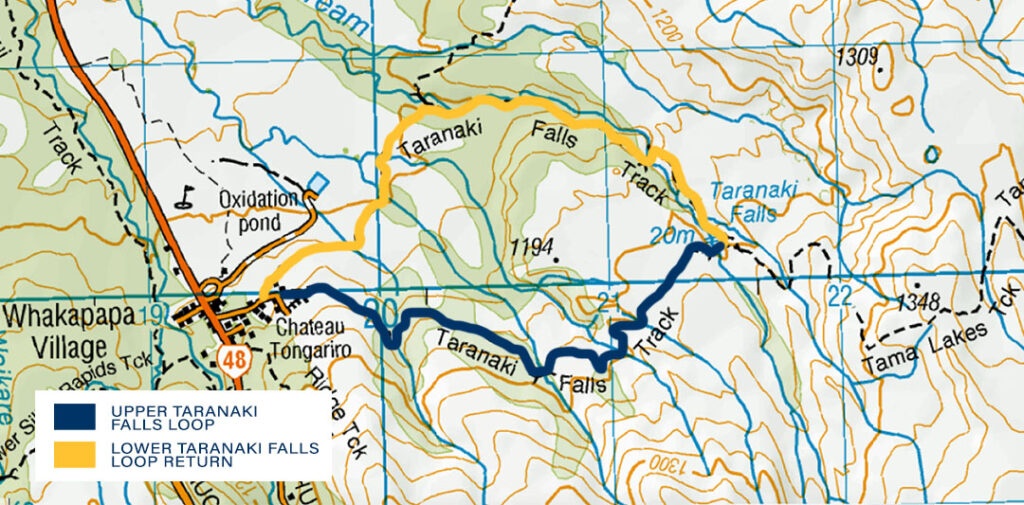
The Taranaki Falls Track should take between 1.5 and 2 hours to complete (depending on your level of fitness and how long you break for). There is a small picnic bench at the falls where you can stop for lunch.
Upper Loop to Taranaki Falls
The first ten minutes or so of the Taranaki Falls Walk is very easy, and traverses through red tussock and manuka before passing into a small section of alpine shrub. This section is covered from the elements, but don’t get comfortable here. Much of the rest of the track is very exposed to the elements.
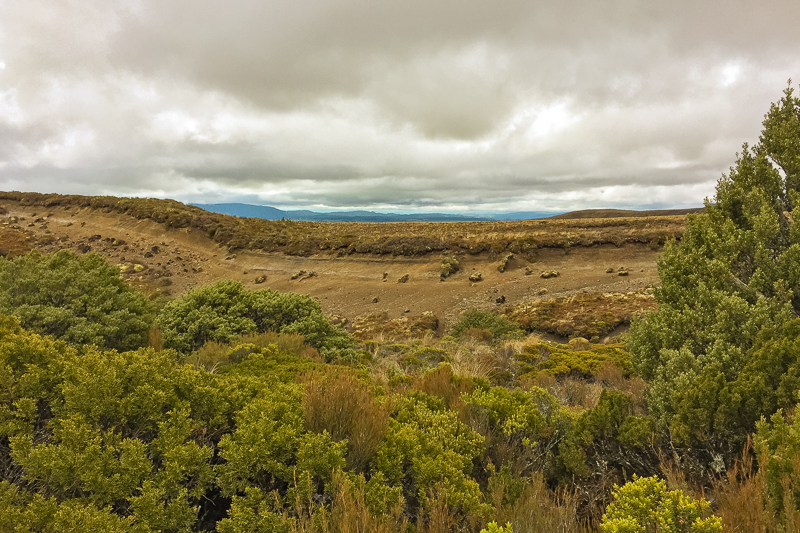
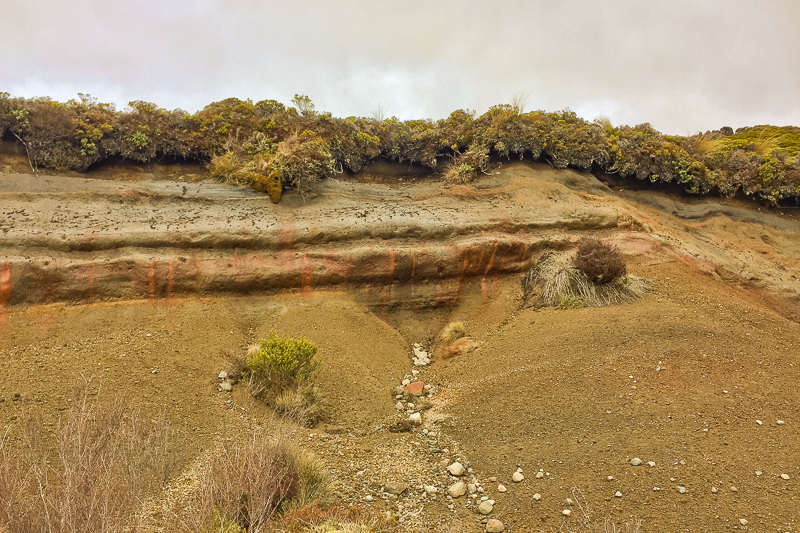
The track is very well formed and maintained by the Department of Conservation. The track can be muddy in sections especially after wet weather, and in winter you might come across some icy patches.
This is a popular and well-trafficked track, so Rangers may undertake maintenance on parts of the track from time to time. Check in with the Whakapapa Visitor Centre beforehand to see if any part of the track is closed.
There are a few bridges to cross over some larger streams, before eventually you climb up and over the last lava flow and the Wairere Stream comes into view.
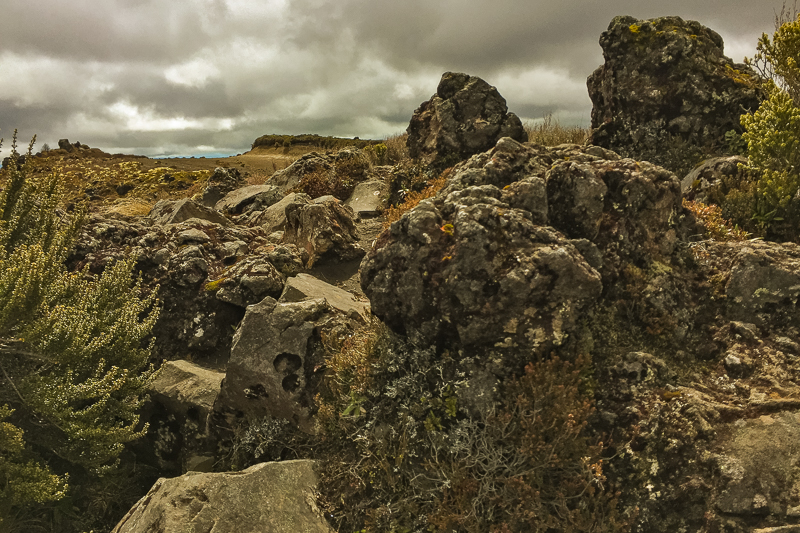
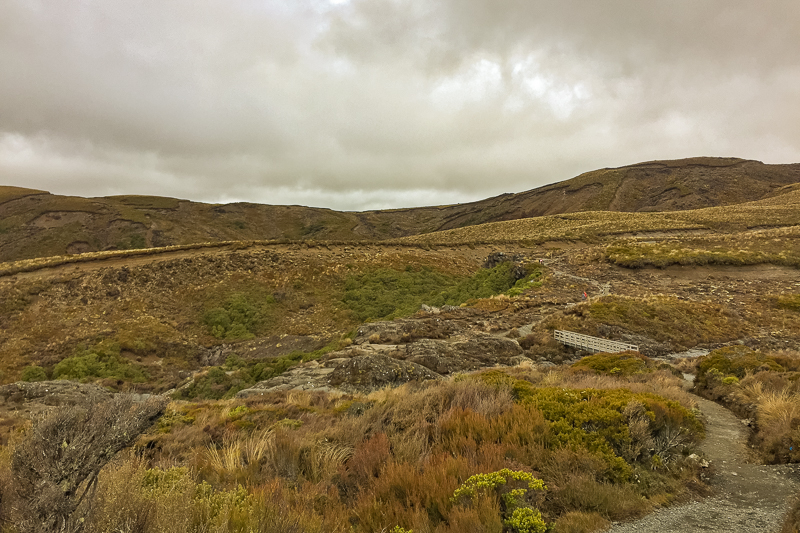
Passing over the Wairere Stream bridge, you can veer left towards the stream and clamber over some of the exposed rock to get a view over the edge of the falls.
Be careful if you decide to do this – the wind can whip up the valley and knock you off your feet. Rocks here can also be very slippery and treacherous. Don’t get too close to the stream (which is fast-flowing and dangerous) or the falls if you feel in danger of slipping.
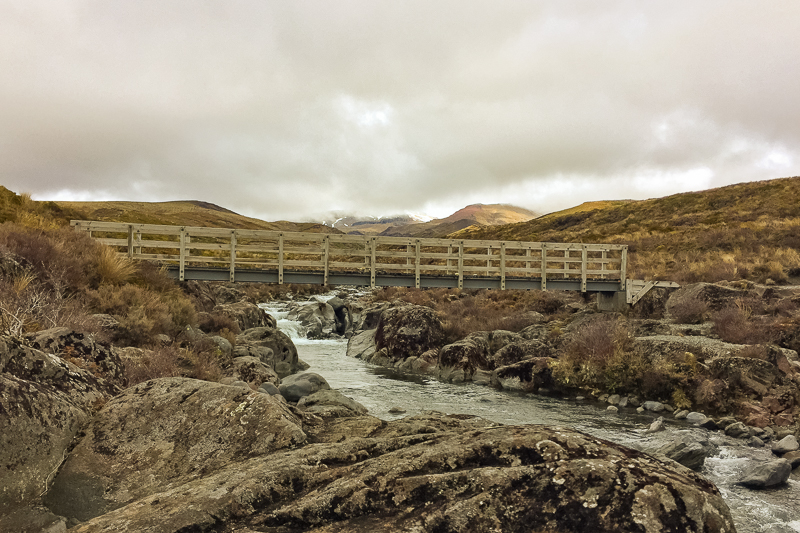
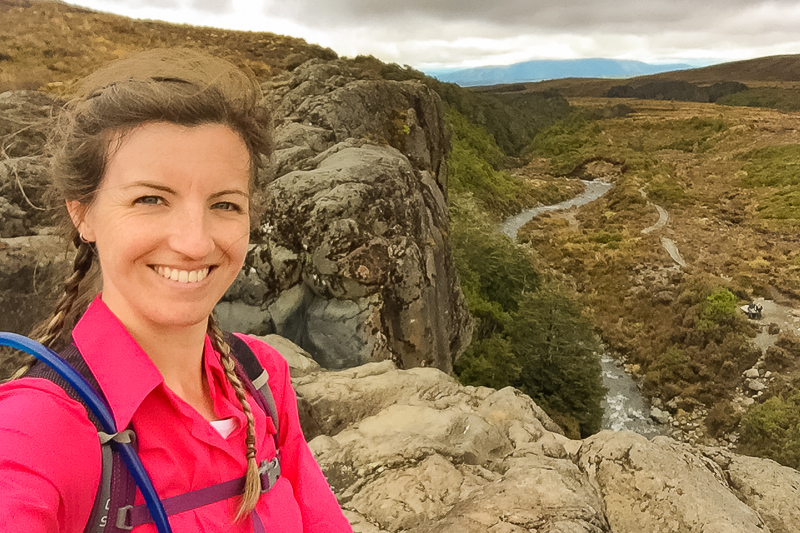
Lower Loop to Whakapapa Village
At the bridge you’ll see a track marker at the junction ahead. To the right hikers can continue to the Tama Lakes and the Tongariro Northern Circuit to Waihohonu Hut.
To the left, head down a steep set of approx. 100 stairs through a small section of bush to the Taranaki Falls viewpoint on the Lower Taranaki Falls Loop track.


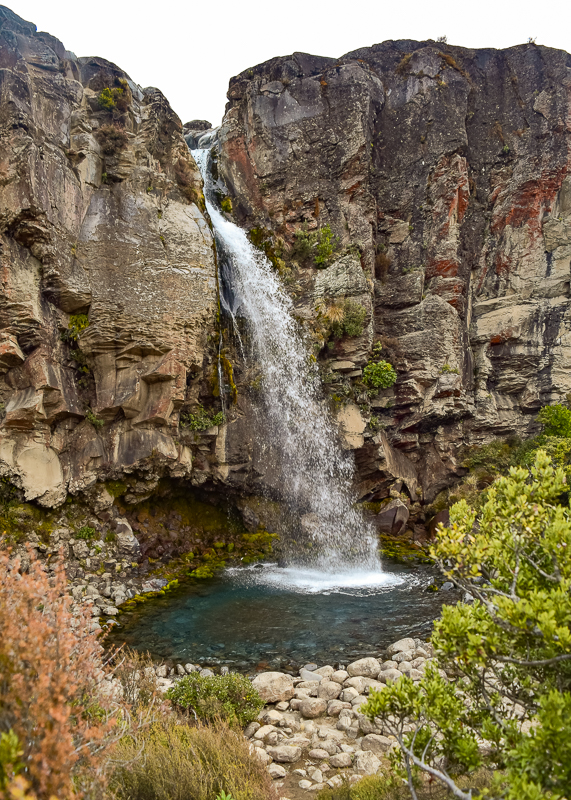
There should be plenty of time to have a play around at the falls with the long exposure on your camera. Venture down to the stream bed and dip your fingers to get a feel for how cold the meltwater flowing off Mt Ruapehu is.
It’s often windy, cold and wet at the bottom of the falls. Even though there’s a small seating area here (making a great place to stop for a spot of lunch) you may prefer to take a break at the top of the falls, where there are plenty of rocks to spread out on whilst taking advantage of the spectacular views.
When you’re ready to depart, continue along the Taranaki Falls Walk track for another five minutes until you reach Cascade Falls. There is another bridge here, and peering over the edge you’ll get some great views of the water which literally cascades over the edge.

From here, the Lower Taranaki Falls Track continues on through beautiful alpine shrub. If you know what you’re looking for, you’ll see toatoa as well as shiny broadleaf and mountain five finger shrubs. You might even be lucky enough to spot some native alpine birds.
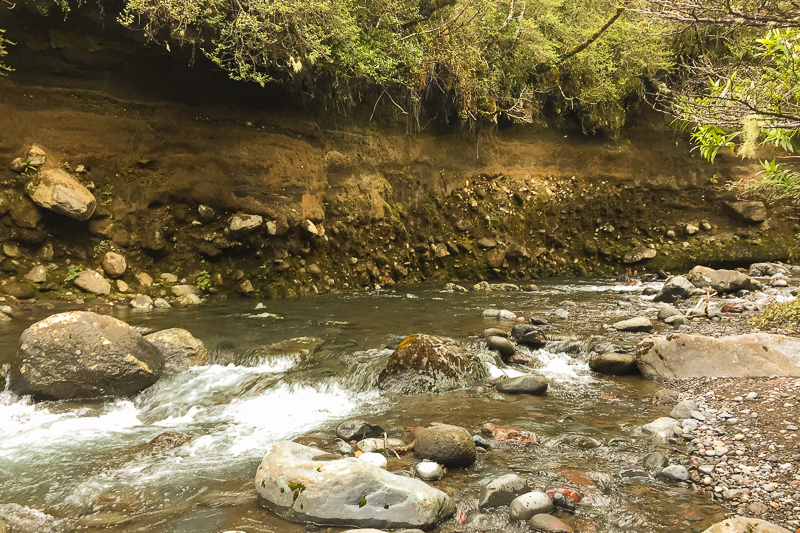
There’s a few steep-ish climbs on the way back to Whakapapa Village, but for the most part the track is easy and pleasant to hike. Upon return to the village, make sure to stop in at the Chateau for a satisfying cream tea.
Final Thoughts.
The Taranaki Falls Track is a fantastic introduction to tramping in the Tongariro National Park for beginner hikers and day trippers. This track is the perfect introduction to longer day walks, and is easily accessible from Whakapapa Village on the slopes of Mt Ruapehu.
By following the advice in this Taranaki Falls Track Guide, you should have a safe and enjoyable trip, but if you’d like to know anything else about this track feel free to leave a comment below or contact me.
If you found this Taranaki Falls Track guide helpful, please take a moment to help me spread the word to other trampers and hikers by sharing it on Pinterest (or on your social media).

